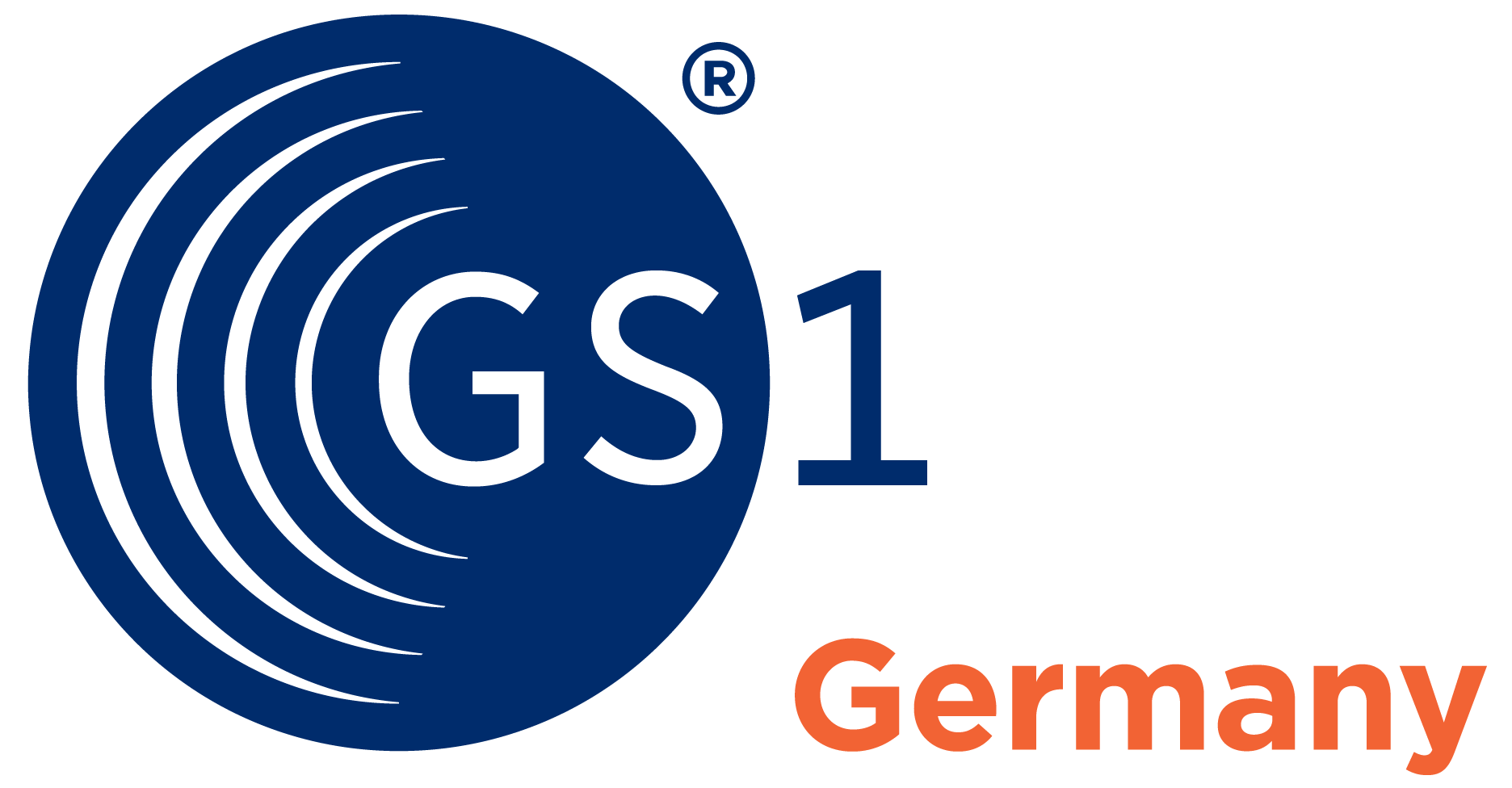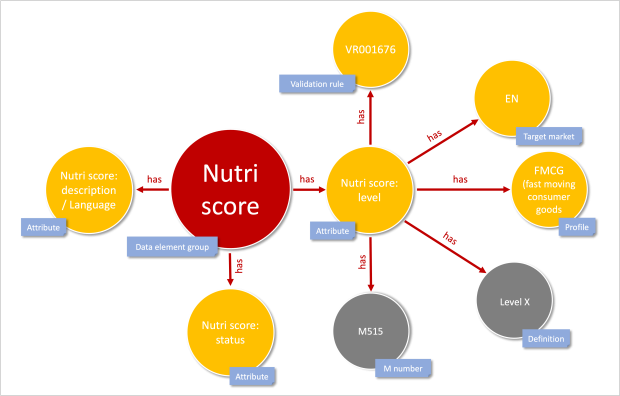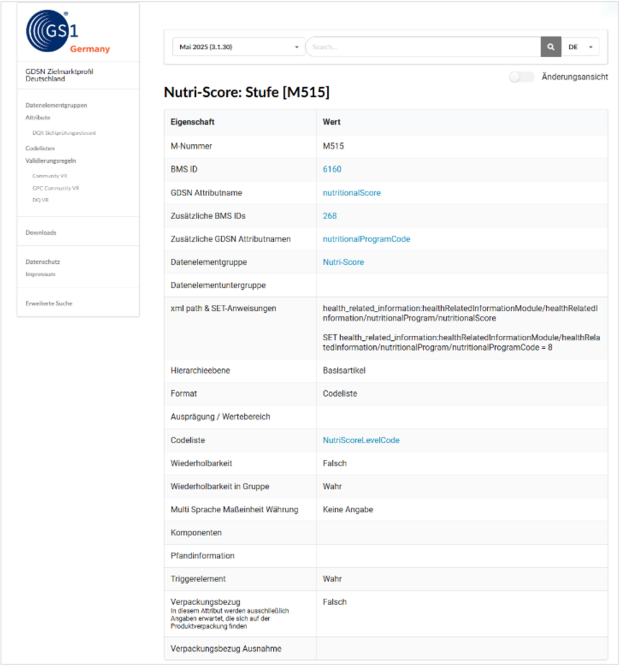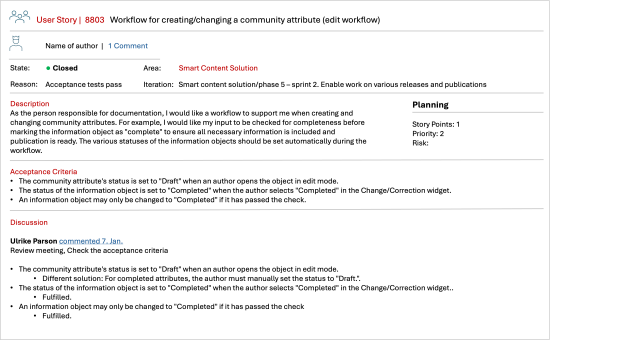
Transforming documentation at GS1 Germany: Transitioning from classic documents to smart content and modern content delivery
We supported GS1 Germany in transforming technical documentation of a standard for digital business processes, converting it from classic documents to structured, modular content. This creates smart content that is maintained in a semantic component content management system (CCMS) and delivered via a content delivery portal.
The project aimed to optimize authoring processes, utilize the CCMS effectively, and provide machine-readable content.
Step by step to smart content: Our project with GS1 Germany
Gathering requirements
First, we gathered the requirements for digitizing technical documentation. Then, we supported GS1 Germany in selecting a system for maintaining the data and documenting the German GDSN target market profile.
GS1 Germany chose klar:suite, a semantic content management solution from Klarso, to document the German GDSN target market profile and manage the respective releases.
GS1 Germany's GDSN target market profile is a national specification based on the GDSN standard developed specifically for the German market. The GDSN is a global GS1 standard for the automated exchange of product master data between business partners.
Developing the information architecture
Based on this, we developed and implemented an information architecture tailored to the needs of the target audiences.
Key requirements were validated in a proof of concept with klar:suite.
The project team developed a data model representing the data structures and relationships in the semantic CCMS. Representative data and documentation content for the GDSN and the German GDSN target market profile was then imported to populate the model..
Using the CCMS to deliver smart content
The current project phase focuses on productive CCMS use and providing German GDSN target market profile information via an online catalog search content delivery portal.
The goal is to make smart content productive, migrate legacy data, and set up a content delivery platform.
Goal: Make smart content productive, migrate legacy data, and set up a content delivery platform
The goal of this project phase was to set up and configure the selected CCMS, klar:suite from Klarso, to maintain, version, and publish our target market profile and related documentation. To accomplish this, we transferred all existing Word and Excel documents into the new semantic data model and mapped GS1 Germany’s authoring processes in the system. This allows us to use the system independently and productively. Another key objective was to make German GDSN target market profile information available digitally via a content delivery platform for online catalog searches.
For this fifth project phase, we chose to work with parson again, convinced by the results of our previous collaboration and impressed by their expertise in semantic technologies and modern CCMS.
Challenges
At the start of the project, the documentation process was based on manual workflows. There was no consistent structure or system-supported authoring (CCMS). Consequently, the effort required to create documentation was high.
We worked with GS1 Germany to take the next step toward a semi-automated, structured technical documentation process and modern content delivery.
Solution
Implementation followed an iterative approach in agile development sprints and covered several parallel work areas.
Work area: Data modeling

First, we did the semantic modeling of the data structures underlying the German GDSN target market profile, including the attributes for the Nutri Score. First, we created a mind map of the data model and coordinated it with GS1 Germany’s subject matter experts. Then, we transferred this model into klar:suite’s semantic database
Advantages of semantic representation
In the original documents, repetitions were common. For instance, views with attributes and their properties appeared multiple times – once with validation rules and again with mappings to specific BMS or community attributes.
Semantic data modeling ensures that each piece of data is captured and managed only once. Repetitions are completely eliminated.
Various views needed for the documentation of the German GDSN target market profile (FMCG), for example, can now be generated by querying specific properties or relationships. This makes the presentation context-based and adaptable to users' specific information needs..
Work area: Requirements definition

In close cooperation with the project team at GS1 Germany and the system vendor Klarso, we refined the user stories that served as the basis for customizing the system to GS1 Germany's requirements. For each user story, we defined clear acceptance criteria. We also supported the testing phases by verifying that the new features met the predefined test scenarios.
Work area: Agile testing

For each sprint, we collaborated with GS1 Germany to define test cases and used them to verify the proper implementation of new features. In addition to the planned features, we monitored the interaction of components and the system's usability. We documented the test cases in Azure DevOps to ensure a direct link to the corresponding user stories at all times.
Work area: User documentation

In parallel with the development process, we created documentation for the features with the clear goal of familiarizing end users with the CCMS from the start. This provides a foundation that GS1 Germany can use to continue the technical documentation independently later on. We prepared the content so that end users can easily understand and apply the functions.
Result: A productive CCMS and information portal for GDSN users
By the end of this project phase, we had a validated, production-ready CCMS. With it, we can independently map all data and information for the German GDSN target market profile, as well as our authoring and approval workflows. Changes to content and GDSN data are automatically detected and published via the content delivery portal, significantly reducing manual effort.
This project has fundamentally modernized our authoring processes and noticeably improved the quality and consistency of our information.
About GS1 Germany
The GS1 Global Data Synchronisation Network (GS1 GDSN) is the world's largest product data network. GS1 GDSN makes it possible for any company, in any market, to share high-quality product information seamlessly. Because companies of all sizes need the same thing – timely and reliable product information – to ultimately benefit consumers and patients.
GS1 GDSN makes it possible for any company, in any market, to share high-quality product information seamlessly. Because companies of all sizes need the same thing – timely and reliable product information – to ultimately benefit consumers and patients.
In Germany, GS1 Germany is responsible for developing and updating the German GDSN target market profile.



